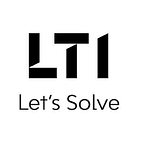IT operations have existed for a long time now, but how equipped is the traditional landscape to handle new issues and challenges swiftly in the operations, is still an unanswered question. In the traditional model, IT operations are typically carried out in a very siloed manner.
For example, the IT support associates are split by different technology towers and each tower arranged in ascendingly clustered by levels. So technically speaking, we have Level 0 responsible for basic queries, Level 1 for slightly complex and so forth up to Level 4. The teams in each tower have strong expertise in their respective technical domain; however, they cannot envision issues and their end-to-end impact on business processes. This is because they either lack knowledge or visibility of what the other SMEs are doing in the connected technology tower. As a result, each team does address their part of the issue and passes the ball to the other team for fixing the respective part.
But that isn’t helping the end-users and business. For example, if there is an issue within the Order to Cash (O2C) process and the underlying technology for that process is split between technology towers, the responsibility to resolve the issue could fall in between. Moreover, the cost to maintain this tower structure is also very high. The solutioning given by this model is ending up costing higher overheads to the delivery team. And as organizations continue to widen their landscape with a mix of custom, SaaS, and monolithic EPR applications, the new support deals and solutions developed around this will be much higher, costly and most of all inefficient for the clients.
How Converged Ops Can Help
This is where converged operations have emerged to help solve these challenges. In converged operations, team members are trained to handle cross-tower issues, as well as to maintain close affinity support across towers, by which each supporting resource can exactly visualize what is happening across other towers and technology, and guide the respective team members where the issue might have stemmed from and fix it accordingly.
This path-breaking approach moves away from the traditional technology tower-based silos to a functional-based approach and can enable business transformation. This structure brings in a reduced team size to support delivery, thereby considerably decreasing the cost overhead on resources. This model promotes more opportunities for automation. Almost all the activities through the standard operating procedure can be transferred to automate. This helps increase the automation opportunity by a minimum of 20% to 30% immediately.
The converged operation consists of cross-functional teams that are classified by service lines. Each services line focuses on one task like service desk, specialized support (remote & onsite), service management, which is either highly procedural or analytical. Collectively, the service lines cater to different events of service operations like Response, Resolution, Restoration, and Re-development across applications.
Key Benefits for Clients/End-Customers
- Service Quality Improvement
- Improvement in MTTR (Mean Time To Repair)
- Improvement in first-level resolution
- Improvement in request fulfillment time
- Improved communication with single team / one-team approach
- Reduction of ticket hop counts where most of the tickets are expected to be resolved within the first level / same function
- Release of SME bandwidth for critical activities/ service improvements
- Standardized process-centric operations — Enable and fast-track automation adoption
Key Benefits for the Delivery Ops
- Cost savings with optimized use of FTEs (full-time equivalents)/Headcount
- Improves operations efficiency
- Standardized operation
- Efficient utilization of resources across multiple technologies
- Continuous shift-left to converged operations team and further to automation
- Reduction in people dependency
- Clear career growth improves ESAT (employee satisfaction) and reduce attrition
Relevancy
With increased focus on cloudification by most business organizations, the scope of cloud operations management has increased for IT operations team, However, many of the administrative task are handled directly by the cloud service providers. The basic tasks are completely removed and almost all the services are provided based on the organization’s needs. But this is what makes converged operations critical for providing timely support to client business users.
The converged operation team has representation from multiple applications and technology towers and thus, the collective knowledge can provide the required support for all technologies in scope, but in a timely manner. With the help of OEM-provided automation tools and knowledge guides, the teams can easily perform all the basic tasks of support as well as act as a SPOC and track the solution from the OEM to closure. If there is a need to support 24×7, as per industry standards, the traditional operations model calls for a minimum of 5 engineers for minimum support in each technology tower and so when there are multiple towers like Application, Database, MSSQL, etc. to be supported in the cloud, the count of resources only multiples. But the activities and tasks done by these tower members in each tower will be very less, comparatively giving a lot of lean hours for the engineers.
In the converged approach, all these towers can be combined into one team i.e. a single 5-member team can provide the minimum 24*7 support for all technology towers and thus eliminating the need for a greater number of resources. There is a huge cost and effort optimization that gets yielded to the business when they shrink this team size. The activities done by 30 or 40 resources can be replaced by 15 to 20 resources. In due future, these resources can also be optimized by doing continuous automation.
Adopting Converged Ops?
Accounts where best utilization of this model can be done are:
Conclusion
Converged operation is a clear way forward for the future model of support, which is being adopted by many clients. With time, the converged operations will not be a key differentiator, but a hygiene factor in all proposed support delivery models.
